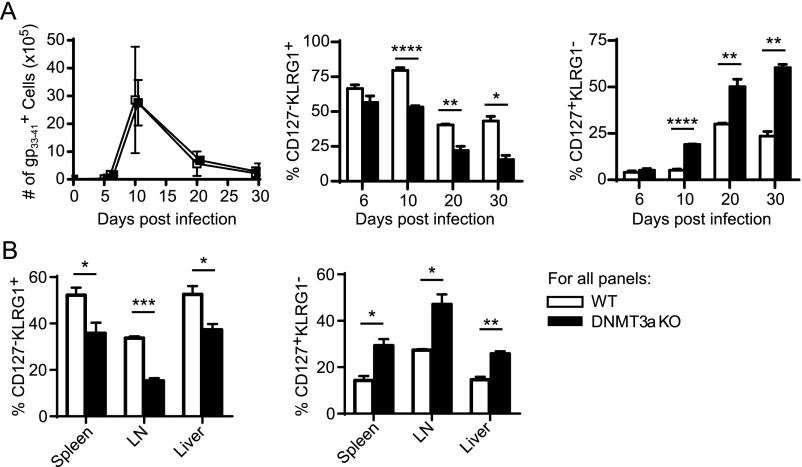Fig. S1.
Differences in CD127+KLRG1− memory precursor cell versus CD127−KLRG1+ terminal effector cell differentiation persist throughout the contraction phase of the immune response and are independent of the tissue examined. Cohorts of WT and DNMT3a KO mice were infected with LCMV and killed at different times as indicated and antigen-specific T cells identified by gp33–41-tetramer staining. (A) Analysis of splenocytes on different days postinfection. (Left) Absolute number of antigen-specific T cells per spleen (each data point = mean ± SD). (Center) Percent of CD127−KLRG1+ antigen-specific CD8+ terminal effector cells. (Right) Percent of CD127+KLRG1− antigen-specific CD8+ memory precursor cells versus time postinfection. Bar graphs (mean ± SEM) compare WT (n = 4) and DNMT3a KO (n = 4) mice for each time point. The experiment was performed three times with similar results. (B) Different tissues were isolated and stained independently from mice killed day 10 postinfection. (Left) Percent of CD127−KLRG1+ antigen-specific CD8+ terminal effector cells. (Right) Percent of CD127+KLRG1− antigen-specific CD8+ memory precursor cells in each tissue. Bar graphs (mean ± SEM) compare WT (n = 3) and DNMT3a KO (n = 3) mice. This experiment was performed three times with similar results. For all panels, *P < 0.05, **P < 0.01, ***P < 0.0005, ****P < 0.0001 (unpaired two-tailed Student’s t test).

